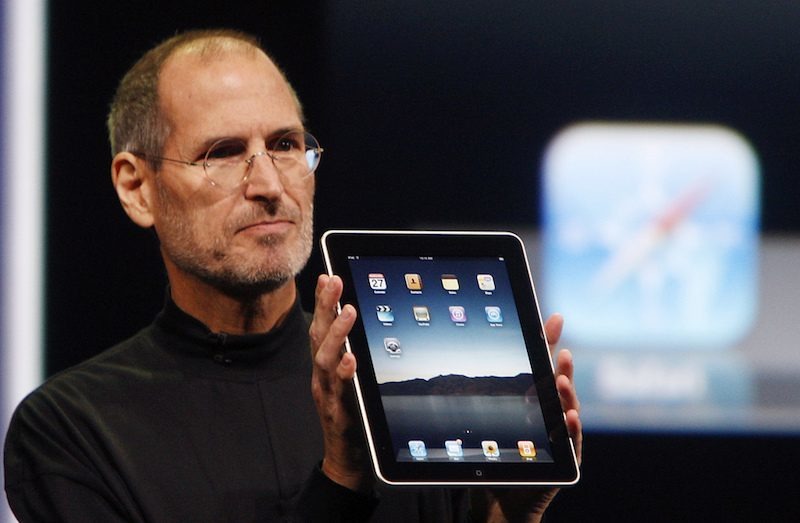Ex-Governor of California Jerry Brown declared October 16, as Steve Jobs day shortly after his passing in 2011. Although it may have been a one-off holiday, today is a perfect opportunity to reflect upon Steve Job’s legacy and iconic designs under his helm. From iPhones to iPads and all the apps in between, one could argue that humanity would not be as tech-savvy without Jobs.
Jobs started Apple with his friend and co-founder Steve Wozniak in 1976 but left in 1985 to build NeXT computers. Several years later Apple purchased NeXT and paved the way for Jobs to return to Apple in 1997. After his return, Jobs promoted Jony Ive, the company’s design guru, to Senior Vice President of Industrial Design. Their collaboration has disrupted the tech design industry and shaped Apple to one of the most valuable companies in the world.
Jobs and Ive weren’t just colleagues and friends, many accounts from family, fellow Apple employees and Jobs’ biographer, described the two as soulmates. Jobs and Ive share similar design philosophies, where both men believed in simplicity being the ultimate sophistication.
Ive left Apple in 2019 to start his own design firm, LoveFrom with Apple as one of his client. From 1997 until Steve Jobs’ passing, the duo have been collaborating to design memorable Apple products that created a cult following.
To honour the day, here’s 11 most iconic Apple designs during Steve Jobs time, designed by Jony Ive.
iMac G3 (1988)
Apple’s most colourful computer ever with 13 colours sold in total. The entire computer system was stowed behind the screen, similar to some earlier designs but far more fun with colours.
iBook G3 (1999)
The translucent, coloured panels from iMac G3 inspired the designs of other products including the iBook G3. It almost looks like handbag with a handle for easy carrying.
G4 Cube Computer (2000)
This computer featured a transparent polycarbonate cover and was smaller than other computer towers at the time. The computer system, packaged in the cube can be pulled out with a handle.
iSub speakers (2000)
iSub is a product of a collaboration between Apple and Harman Kardon. This design is so popular, it is featured in a museum.
iPod (2001)
iPod was not the first MP3 player, but its sleek design, memorable advertising campaign and genius scroll wheel that makes it the “It” product at the time.
iMac G4 computer (2001)
One design element that stood out was its thin flat display panel floating upon a swing metal arm and cramming a full computer system in a 10.6 inch diameter dome.
iMac G5 (2004)
With its sturdy L-shape stand, deep bottom bezel and large screen,
Apple all-in-one iMac G5 would become the pattern for all subsequent iMacs until today.
iPod Mini (2004)
The iPod Mini was highly popular and sold in various colours. It’s encased in an ultra-portable, lightweight aluminium body and featured a touch-sensitive click wheel for easy one-handed navigation.
iPhone (2007)
When the first iPhone was launched, Apple disrupted the smartphone market with its ingeniously sleek design that is centred on a glass multi-touch screen display. The device featured a chrome plated metal frame with the back made of aluminium and a plastic base.
iPad (2010)
Like the iPhone, Apple emphasised on user-friendliness and premium design with the iPad. The iPad helped usher in a new era of large-screen tablets with its 9.7-inch display.
MacBook Air (2008)
The MacBook was so thin that Steve Jobs introduced it by pulling it out of a manila envelope on stage. It was initially promoted as the world’s thinnest notebook at 1.9cm.
